Ghostbusters (1984) follows three eccentric parapsychologists, Peter Venkman, Ray Stantz, and Egon Spengler, who establish a ghost-catching business in New York City after being fired from their university positions. As paranormal activity increases, they investigate a gateway to another dimension opened by an ancient Sumerian god, Gozer. Joined by Winston Zeddemore, the Ghostbusters must save the city from Gozer's impending arrival, battling ghosts, bureaucratic obstacles, and ultimately, a giant Stay-Puft Marshmallow Man manifestation of Gozer's chosen form.
1915: Archival Photograph from Fire House No. 23
In 1915, an archival photograph of an active crew in Fire House No. 23 was taken, and it was later hung in the background of the Ghostbusters' office.
1940: Inspiration from The Ghost Breakers
In 1940, Bob Hope's film The Ghost Breakers served as an inspiration for Ghostbusters.
1941: Inspiration from Hold That Ghost
In 1941, Abbott and Costello's film Hold That Ghost served as an inspiration for Ghostbusters.
1951: Inspiration from Ghost Chasers
In 1951, the Bowery Boys' film Ghost Chasers served as an inspiration for Ghostbusters.
1959: Cadillac Miller-Meteor ambulance conversion
In 1959, the transformation of the 1959 Cadillac Miller-Meteor ambulance conversion into the Ectomobile began.
1976: Release of Taxi Driver
In 1976, the film Taxi Driver was released, set in a gritty, collapsing, crime-ridden, and failed New York.
1977: Inspiration from Close Encounters of the Third Kind
In 1977, Reitman was influenced by "Close Encounters of the Third Kind (1977)" for the scene where Dana is pinned to her chair by demonic hands.
1977: Success of Star Wars merchandising
In 1977, the merchandising success of Star Wars was confirmed, and Ghostbusters built upon this success by launching spin-offs and establishing a business model in the film industry.
1978: Ivan Reitman's Success with Animal House
In 1978, Ivan Reitman had success with the film Animal House, which contributed to Aykroyd believing he was the logical choice to direct Ghostbusters.
1979: Sigourney Weaver's Role in Alien
In 1979, Sigourney Weaver's role in Alien was noted as part of her generally serious acting roles, which initially caused some resistance to casting her in Ghostbusters.
1979: Release of The Warriors
In 1979, the film The Warriors was released, set in a gritty, collapsing, crime-ridden, and failed New York.
1981: Aykroyd Inspired by Quantum Physics and Parapsychology
In 1981, Dan Aykroyd read an article on quantum physics and parapsychology in The Journal of the American Society for Psychical Research, which gave him the idea of trapping ghosts, inspiring Ghostbusters.
1981: Ivan Reitman's Success with Stripes
In 1981, Ivan Reitman had success with the film Stripes, which contributed to Aykroyd believing he was the logical choice to direct Ghostbusters.
1981: Inspiration from An American Werewolf in London
In 1981, Johnson based the Zombie Cab Driver puppet on a reanimated corpse puppet he had made for "An American Werewolf in London (1981)".
1981: Release of Escape from New York
In 1981, the film Escape from New York was released, set in a gritty, collapsing, crime-ridden, and failed New York.
March 1982: John Belushi's Death
In March 1982, John Belushi's accidental death occurred, impacting the initial plans for Ghostbusters, where he was intended to star alongside Dan Aykroyd.
1982: Poltergeist reference for ghost designs
In 1982, Edlund's previous work on the supernatural horror film "Poltergeist (1982)" served as a reference for the ghost designs in Ghostbusters.
1982: John Belushi's death
In 1982, John Belushi died, which led to script revisions for Ghostbusters. Harold Ramis was hired to rewrite the script to set it in New York City and make it more realistic after Aykroyd's original concept was deemed financially impractical.
1982: Sigourney Weaver's Role in The Year of Living Dangerously
In 1982, Sigourney Weaver's role in The Year of Living Dangerously was noted as part of her generally serious acting roles, which initially caused some resistance to casting her in Ghostbusters.
1982: Tootsie major success for the studio
Since "Tootsie" in 1982, during its first week Ghostbusters became the first major success for the studio.
March 1983: Reitman Pitches to Columbia Pictures
In March 1983, Ivan Reitman pitched the film to Columbia Pictures executive Frank Price. Price agreed to the project, as long as the film could be released by June 1984.
July 1983: Initial Draft Completed on Martha's Vineyard
In mid-July 1983, Aykroyd, Ramis and Reitman completed their initial draft of the Ghostbusters script on Martha's Vineyard.
October 1983: Filming Begins
In October 1983, filming for Ghostbusters began in New York City and Los Angeles. Due to competition for special effects studios among various films in development at the time, Richard Edlund used part of the budget to found Boss Film Studios.
October 28, 1983: Principal Photography Begins in New York
On October 28, 1983, principal photography for Ghostbusters began in New York City. Ivan Reitman brought Bill Murray to the set on the first day, still unsure if Murray had read the script.
1983: Huey Lewis song plagiarism
In 1983, Huey Lewis song "I Want a New Drug" was plagiarized by Parker Jr.'s Ghostbusters song.
January 1984: Principal Photography Concluded
At the end of January 1984, principal photography for Ghostbusters concluded after 55 to 62 days of filming.
January 1984: Filming Concludes
In January 1984, filming for Ghostbusters wrapped up in New York City and Los Angeles. Boss Film Studios employed a combination of practical effects, miniatures, and puppets to deliver the ghoulish visuals.
February 3, 1984: Ghostbusters screened for test audiences
On February 3, 1984, Ghostbusters was screened for test audiences with unfinished effects shots to determine if the comedy worked.
June 7, 1984: Ghostbusters premiere
On June 7, 1984, the premiere of Ghostbusters took place at the Avco Cinema in Westwood, Los Angeles.
June 8, 1984: Ghostbusters Released
On June 8, 1984, Ghostbusters was released to critical acclaim and became a cultural phenomenon. It was praised for its blend of comedy, action, and horror and earned at least $282 million worldwide during its initial theatrical run. Ray Parker Jr.'s "Ghostbusters" also hit number one.
June 1984: Deadline for Ghostbusters Release
Columbia Pictures set a deadline of June 1984 for the release of Ghostbusters.
1984: Iconic movies released
1984 saw the release of several films that would later be considered iconic of the era, including: "Gremlins", "The Karate Kid", "The Terminator", "A Nightmare on Elm Street", "Romancing the Stone", and "The NeverEnding Story". It was also the first year in box office history in which four films, including Ghostbusters, grossed over $100 million.
1984: Ghostbusters success
In 1984, Ghostbusters became a hit, surpassing "Indiana Jones and the Temple of Doom" as the top-grossing film of the summer, earning $229 million.
1984: Release of Ghostbusters
In 1984, Ghostbusters, directed by Ivan Reitman and written by Dan Aykroyd and Harold Ramis, was released. The film stars Bill Murray, Dan Aykroyd, and Harold Ramis as three parapsychologists who start a ghost-catching business in New York City.
1984: "Ghostbusters" at number one
In 1984, Ray Parker Jr.'s "Ghostbusters" spent three weeks at number one on the Billboard Hot 100 chart.
1984: Murray meets Aykroyd and Ramis
In 1984, after filming The Razor's Edge, Bill Murray flew to New York to meet with Dan Aykroyd and Harold Ramis to discuss the Ghostbusters script. He offered little input, trusting Ramis to handle his character's voice.
1984: Francis Ford Coppola filming The Cotton Club
In 1984, during the filming of Ghostbusters, angry citizens asked what was being filmed, and Michael C. Gross blamed Francis Ford Coppola's filming of The Cotton Club as an excuse.
1984: The "-busters" suffix becomes a common term
In 1984, the Ghostbusters phenomenon was referenced in numerous advertisements, and the "-busters" suffix became a common term applied to various topics.
1984: Halloween dominated by Ghostbusters costumes
In 1984, the Ghostbusters phenomenon was widespread, and Halloween was dominated by children dressed as the titular protagonists.
1984: Ghostbusters Launched Multimedia Franchise
In 1984, the success of Ghostbusters launched a multi-billion dollar multimedia franchise that included television series, video games, board games, comic books, clothing, music, and haunted attractions.
January 1985: Ghostbusters left cinemas
In January 1985, Ghostbusters left cinemas after a thirty-week run.
August 1985: Ghostbusters re-released
In August 1985, Ghostbusters was re-released in the U.S. and Canada, grossing a further $9.4 million over five weeks.
October 1985: Ghostbusters released on VHS
In October 1985, Ghostbusters was released on VHS, priced at $79.95, supported by a $1 million advertising campaign. It was the tenth best-selling videocassette during its launch week.
1985: Academy Award nominations
In 1985, Ghostbusters was nominated for two Academy Awards: Best Original Song for "Ghostbusters" by Ray Parker Jr. and Best Visual Effects for John Bruno, Richard Edlund, Chuck Gaspar and Mark Vargo.
1985: Settlement out of court
In 1985, Huey Lewis sued Parker Jr. for plagiarizing his 1983 song "I Want a New Drug"; the case was settled out of court.
1985: Huey Lewis already committed to Back to the Future
In 1985, Huey Lewis was approached to compose the theme for Ghostbusters, but he was already committed to working on "Back to the Future (1985)".
1985: Release of novelization "Ghostbusters: The Supernatural Spectacular"
In 1985, Richard Mueller's novelization of "Ghostbusters", titled "Ghostbusters: The Supernatural Spectacular", was released.
1985: Library Ghost puppet repurposed for Fright Night
In 1985, The original Library Ghost puppet was considered too scary for younger audiences and was repurposed for use in "Fright Night (1985)".
1985: Bernstein Interview Describing Ghostbusters Score
In a 1985 interview, Elmer Bernstein described Ghostbusters as the most difficult score he had written, due to balancing comedic and serious tones.
February 1986: Ghostbusters VHS sales reach 400,000 copies
By February 1986, Ghostbusters VHS sales were estimated to have reached 400,000 copies, earning $32 million in revenue and becoming the third best-selling VHS of 1985.
1986: The Real Ghostbusters Released
In 1986, The Real Ghostbusters, a popular animated television series, was released as part of the Ghostbusters multimedia franchise.
1986: Merchandising success driven by "The Real Ghostbusters"
In 1986, merchandising success for Ghostbusters increased after licensing the rights to other companies, based on the success of the animated spin-off "The Real Ghostbusters".
1986: The Real Ghostbusters Animated Series Release
In 1986, the animated television series 'The Real Ghostbusters' was released as part of the Ghostbusters franchise.
1986: Slimer's name revealed
In 1986, the gluttonous, slimy, green ghost was given the name "Slimer" in the animated television series "The Real Ghostbusters".
1987: Report estimates Murray earned $20–30 million
A 1987 report estimated Murray alone had earned between $20–30 million from his share of Ghostbusters profits.
1987: Release of Hi-C Ecto Cooler drink
In 1987, a Slimer-inspired, limited-edition, citrus-flavored Hi-C Ecto Cooler drink was first released.
1988: Murray stars in "Scrooged"
In 1988, Bill Murray returned to central roles in films with the Christmas comedy "Scrooged", which used the tagline that Murray was "back among the ghosts".
1988: Ghostbusters proton pack is the most popular toy in the UK
In 1988, the Ghostbusters proton pack was the most popular toy in the United Kingdom, with "The Real Ghostbusters" helping generate up to $200 million in revenue.
1989: Ghostbusters II Released
In 1989, Ghostbusters II was released, but it fared less well financially and critically compared to the original film.
1989: Ghostbusters released on LaserDisc
In 1989, Ghostbusters was released on LaserDisc, in a one-disc version and a two-disc special edition with deleted scenes and special features.
1989: Reitman expresses frustration over lack of recognition for Ghostbusters
In a 1989 interview, Ivan Reitman expressed his frustration at the perceived lack of respect Ghostbusters received, feeling it was dismissed as just another action-comedy.
1990: Ghostbusters stage show opens at Universal Studios Florida
In 1990, Ghostbusters was adapted into a special-effects laden stage show at Universal Studios Florida.
1995: Aykroyd reprises his Ghostbuster character in Casper
In 1995, Dan Aykroyd reprised his Ghostbuster character for a cameo in Casper.
1996: Ghostbusters stage show ends at Universal Studios Florida
In 1996, the Ghostbusters special-effects laden stage show ended at Universal Studios Florida.
1997: Extreme Ghostbusters Released
In 1997, Extreme Ghostbusters, a follow-up to The Real Ghostbusters, was released.
1997: Release of Men in Black
In 1997, the film Men in Black was released, replicating Ghostbusters' basic premise of a particular genre mixed with comedy, and a team combating an otherworldly threat.
1997: Extreme Ghostbusters Sequel Series Release
In 1997, the sequel series 'Extreme Ghostbusters' was released.
1999: International gross
By the end of 1999, Ghostbusters had grossed $126 million internationally for a worldwide total of $364.6 million.
1999: Reitman comments on LaserDisc visual flaws
In a 1999 interview concerning the DVD release, Ivan Reitman expressed embarrassment over the visual changes made to the Ghostbusters LaserDisc versions, citing flaws in the special effects.
2000: Reissues gross
Since 2000, including all reissues, the film has grossed an estimated $370 million worldwide.
2001: Cessation of Hi-C Ecto Cooler drink production
In 2001, production of the Slimer-inspired Hi-C Ecto Cooler drink ceased.
2001: Ranked on AFI's 100 Years...100 Laughs List
In 2001, the American Film Institute ranked Ghostbusters number 28 on its 100 Years...100 Laughs list, which recognized the best comedy films.
2001: Release of Evolution
In 2001, the film Evolution was released, replicating Ghostbusters' basic premise of a particular genre mixed with comedy, and a team combating an otherworldly threat.
2004: Ghostbusters: The Return Novel Release
In 2004, 'Ghostbusters: The Return' was released as the first in a planned series of sequel novels.
2006: Peter Venkman ranked on Empire's Greatest Movie Characters List
In 2006, Murray's Peter Venkman appeared at number 44 on Empire's list of the "100 Greatest Movie Characters".
2008: Ghostbusters released on USB flash drive
In 2008, Ghostbusters became the first full-length film to be released on a USB flash drive by PNY Technologies.
2009: Ghostbusters: The Video Game Release
In 2009, 'Ghostbusters: The Video Game' was released, featuring narrative contributions from Ramis and Aykroyd, and voice acting by Murray, Aykroyd, Ramis, Hudson, Potts, and Atherton.
2009: Murray's Interview about a Third Film
In 2009, Bill Murray expressed his reluctance to participate in a third Ghostbusters film during an interview.
2009: Ranked on National Review's Best Conservative Movies List
In 2009, National Review ranked Ghostbusters number 10 on its list of the 25 Best Conservative Movies of the Last 25 Years.
2009: Blu-ray released for the film's 25th anniversary
In 2009, a Blu-ray disc edition of Ghostbusters was released for the film's 25th anniversary, featuring remastered 4K resolution video quality, deleted scenes, fan interviews, and commentaries.
2010: Work on 2010: The Year We Make Contact
In 2010, the team at Boss Film Studios split to complete work on both Ghostbusters and MGM's science-fiction film "2010: The Year We Make Contact".
2012: Screen-used proton pack sells for $169,000 at auction
In 2012, memorabilia from Ghostbusters was popular, and a screen-used proton pack sold for $169,000 at auction.
2012: The Avengers' ending inspired by Ghostbusters
In 2012, the celebratory parade at the end of Ghostbusters inspired the ending of the superhero film The Avengers.
2012: Release of The Watch
In 2012, the film The Watch was released, replicating Ghostbusters' basic premise of a particular genre mixed with comedy, and a team combating an otherworldly threat.
2013: Ghostbusters listed in "1001 Movies You Must See Before You Die"
In 2013, Ghostbusters was listed in the film reference book "1001 Movies You Must See Before You Die".
2013: Release of R.I.P.D.
In 2013, the film R.I.P.D. was released, replicating Ghostbusters' basic premise of a particular genre mixed with comedy, and a team combating an otherworldly threat.
August 2014: Restored version of Ghostbusters released
In August 2014, a restored and remastered version of Ghostbusters was released in 700 theaters across the U.S. and Canada to celebrate its 30th anniversary.
2014: Reitman Sells Rights to Columbia After Ramis' Death
Following Ramis's death in 2014, Reitman negotiated a deal to sell the rights to Columbia to continue the franchise, and founded Ghost Corps with Aykroyd.
2014: Ghostbusters ranked 77th best film of all time by The Hollywood Reporter
In 2014, The Hollywood Reporter's entertainment industry-voted ranking named Ghostbusters the seventy-seventh best film of all time.
2014: Blu-ray released for the film's 30th anniversary
In 2014, a Blu-ray disc edition of Ghostbusters was released for the film's 30th anniversary, featuring remastered 4K resolution video quality, deleted scenes, fan interviews, and commentaries.
2014: Development of Ghostbusters II Sequel Paused
In 2014, attempts to develop a second sequel to Ghostbusters were paused following Harold Ramis's death.
2014: Hudson expresses mixed feelings about his role in Ghostbusters
In a 2014 interview, Ernie Hudson expressed mixed feelings about his character Winston in Ghostbusters, regretting his marginalization from the original script and the lack of career improvement he had hoped for.
2014: Reitman's Interview on Filming in New York
In a 2014 interview, Ivan Reitman explained that he chose New York as the filming location because he wanted the film to be his 'New York movie'.
November 2015: Screenplay Listed on 101 Funniest Screenplays
In November 2015, the Ghostbusters screenplay was listed as number 14 on the Writers Guild of America's 101 Funniest Screenplays.
2015: Ghostbusters Selected for Preservation
In 2015, Ghostbusters was selected by the Library of Congress for preservation in the National Film Registry.
2015: Ghostbusters selected for preservation in the National Film Registry
In 2015, the United States Library of Congress selected Ghostbusters for preservation in the National Film Registry, recognizing its cultural, historical, and aesthetic significance.
2016: Release of Ghostbusters: Answer the Call
In 2016, Ghostbusters: Answer the Call was included in the Ghostbusters: Ultimate Collection Blu-ray and Ultra HD Blu-ray boxset.
2016: Ghostbusters Reboot Released
In 2016, a Ghostbusters reboot was released but received mixed reviews and underperformed financially.
2016: Release of Ghostheads documentary
In 2016, the crowdfunded documentary Ghostheads was released, showcasing Ghostbusters fans and the effect the series had on their lives, with interviews from crew members.
2016: Female-Led Ghostbusters Reboot Release and Controversy
In 2016, the female-led reboot 'Ghostbusters' (later retitled 'Ghostbusters: Answer the Call') was released amidst controversy and considered a box-office bomb with mixed reviews.
2017: Newly discovered ankylosaur fossil named Zuul crurivastator
In 2017, a newly discovered ankylosaur fossil was named Zuul crurivastator after Gozer's minion from Ghostbusters.
2017: Ranked on BBC's Funniest Films Poll
In 2017, the BBC polled 253 critics from 52 countries on the funniest film made, and Ghostbusters came ninety-fifth.
June 2019: Release of remastered Bernstein's score
In June 2019, a remaster of Elmer Bernstein's Ghostbusters score was released on compact disc, digital, and vinyl formats. It includes four unreleased tracks, and commentary by Bernstein's son Peter.
2019: Blu-ray released for the film's 35th anniversary
In 2019, a Blu-ray disc edition of Ghostbusters was released for the film's 35th anniversary in a limited edition steel book cover, containing unseen footage.
2019: Release of Cleanin' Up the Town: Remembering Ghostbusters documentary
In 2019, the documentary Cleanin' Up the Town: Remembering Ghostbusters was released, detailing the film's production.
2020: Adjusted gross
In 2020, adjusted for inflation, the North American box office is equivalent to $667.9 million, making it the thirty-seventh highest-grossing film ever.
2021: Ghostbusters: Afterlife Release
In 2021, 'Ghostbusters: Afterlife', directed by Jason Reitman, was released as a sequel to the original two films.
2021: Release of Ghostbusters: Afterlife
In 2021, Ghostbusters: Afterlife was included in the Ghostbusters: Ultimate Collection Blu-ray and Ultra HD Blu-ray boxset.
February 2022: Ghostbusters: Ultimate Collection Blu-ray and Ultra HD Blu-ray boxset released
In February 2022, the 8-disc Ghostbusters: Ultimate Collection Blu-ray and Ultra HD Blu-ray boxset was released, containing Ghostbusters, Ghostbusters II, Ghostbusters: Afterlife, and Ghostbusters: Answer the Call.
2024: Ghostbusters: Frozen Empire Release
In 2024, 'Ghostbusters: Frozen Empire' was released as a sequel to the original two films.
Mentioned in this timeline
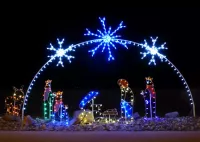
Christmas is an annual festival celebrated on December th commemorating...
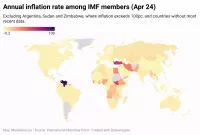
Inflation in economics signifies an increase in the average price...
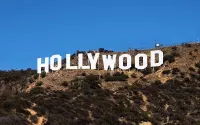
Los Angeles is the most populous city in California and...
Star Wars created by George Lucas starting with the film...
Florida a state in the Southeastern United States is largely...
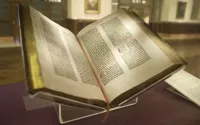
Books are a means of storing information as text or...
Trending
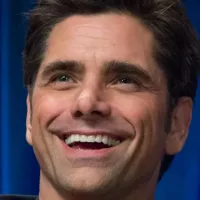
John Stamos is an American actor and musician who rose to fame as Blackie Parrish on General Hospital earning a...
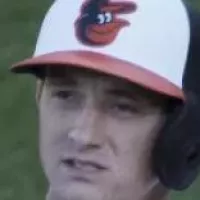
8 months ago Austin Hays emerges as a top Fantasy Baseball Waiver Wire pickup.
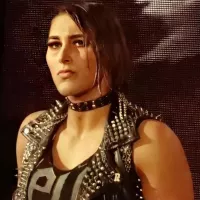
1 month ago Maxxine Dupri, assisted by AJ Lee, dethrones Becky Lynch for Intercontinental Title on Raw!
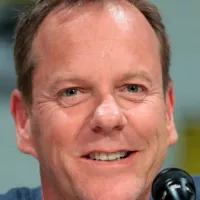
7 months ago Kiefer Sutherland and Rebel Wilson star in 'Tinsel Town'; First Look Released!
26 days ago Republic Services Donates Turkeys Across Tennessee for Holidays, Helping Families in Need
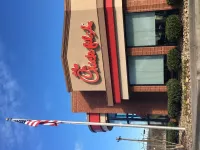
Chick-fil-A is a prominent American fast food chain known for its chicken sandwiches With headquarters in College Park Georgia they...
Popular

Tucker Carlson is an American conservative political commentator known for...

XXXTentacion born Jahseh Dwayne Ricardo Onfroy was a controversial yet...

Ben Shapiro is a prominent American conservative political commentator media...

Candace Owens is an American conservative political commentator and author...

William Franklin Graham III commonly known as Franklin Graham is...

Ursula Gertrud von der Leyen is a prominent German politician...
